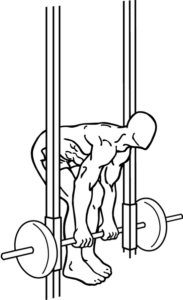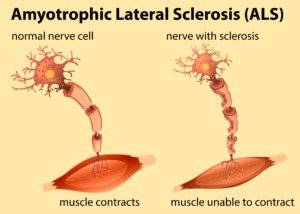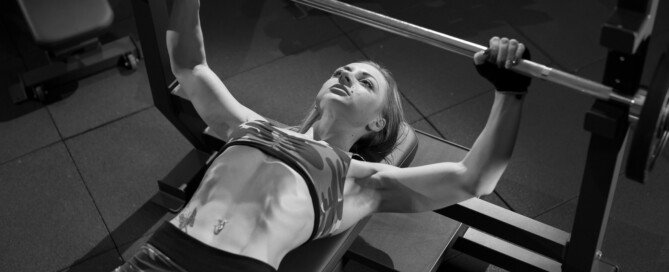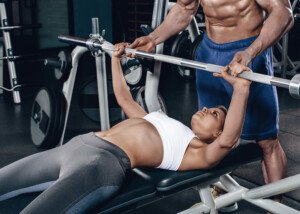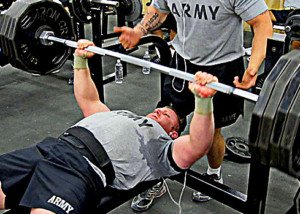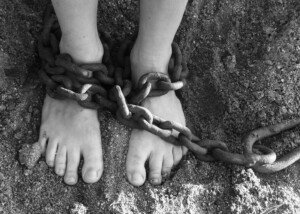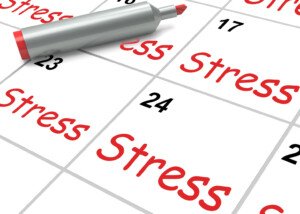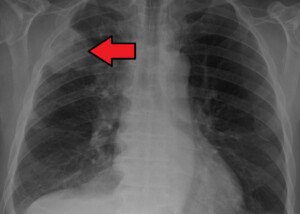Why Do So Few Women Do the Rack Pull Exercise?
Why’s it so uncommon to see women doing rack pulls?
Are women “intimidated” by the rack pull?
If anything, women should be flocking to do rack pulls because this exercise, when done intensely with heavy weight, is a great fat-burner. (more…)
Why Women Should Do Rack Pulls: Burn Fat, Tone Back, Arms, Legs

Rack pulls are an empowering exercise for women who want a simple way to burn fat, tone & strengthen their back and core, and tone their arms & legs. (more…)
Why You Should Drink Lemonade in the Winter

If you avoid lemonade only in wintertime, ask yourself what the logic for this is.
Advertising? You drink other cold juices in winter, right? Why not lemonade? (more…)
What Are the Best Exercises for Irritable Bowel Syndrome ?

You’ll be happy to know that MANY exercises are great for irritable bowel syndrome; you have a lot to choose from.
However, it’s the WAY you exercise that will make a difference. (more…)
How Women Can Strengthen Forearms without Bulking

Here are forearm strengthening exercises for women that will not bulk up their forearms.
You can have stronger forearms and hands without that burly look.
The Wrist Roll
The wrist roll device is sold online, and some gyms have these.
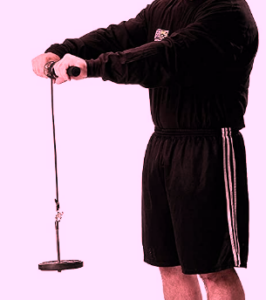
The GoFit Wrist strengthener
Roll upward clockwise for a few sets, then counterclockwise.
Remember, it’s exceedingly difficult for women to grow big forearms!
Hand Grippers
These work the forearms, even though they’re called “hand grips.”

The best kind have adjustable tension. Many people squeeze these incessantly, building stamina rather than strength.
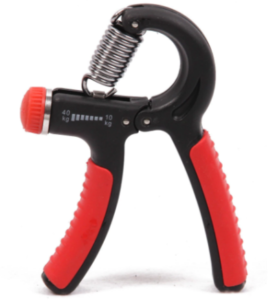
Think of hand grips as you do any other strength training exercise: an 8-12 rep max.
Set the tension so that 8-12 full grip reps are very difficult. This will take some experimenting; you may find that what you think was a difficult tension setting leaves you feeling you can do 10 more after you finish the 12th rep.
Increase the tension then. Remember, you want strength, not endurance.
Squeeze the handles all the way so that their ends meet each other, then release with a two-count.
The release is the negative; just as important as the positive contraction.
Performing hand grips with the palm down is harder than with palm up; be sure to use both palm positions.
The Reverse Curl
When done with strict form, these are maddening to the forearms.
Strict form means avoiding swinging the back and jerking up the weight.
Stand with feet shoulder width or so apart, a soft bend in the knees, and grip the weight.
Palms should be facing towards the floor, whether the weight is a barbell, kettlebell, dumbbells or plate.

everkinetic.com
Keeping upper arms at your sides and vertical, curl the weight to engage your forearm and wrist muscles.

Always release slowly. Don’t think of reverse curls as something you tack onto your workout after a biceps exercise.
Consider the reverse curl as a workout all to itself, just as you do a dumbbell press.
The Hammer Curl
If these are done while seated, the forearms will be isolated more.
The hand position is neutral: Palms face each other while curling the weights. Release with control. See the images below.


 Lorra Garrick has been covering medical, fitness and cybersecurity topics for many years, having written thousands of articles for print magazines and websites, including as a ghostwriter. She’s also a former ACE-certified personal trainer.
Lorra Garrick has been covering medical, fitness and cybersecurity topics for many years, having written thousands of articles for print magazines and websites, including as a ghostwriter. She’s also a former ACE-certified personal trainer.
.
Top image: Freepik.com
Why Don’t More Women Bench Press? Bench Workout for Women
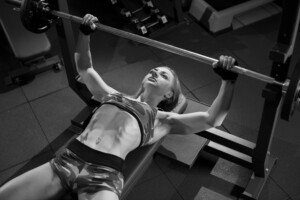
Women need to bench press, but few at any given gym actually do.
If you’re a woman, ask yourself why you don’t bench press.
Here’s an excellent workout for women who want to start bench pressing. (more…)
Stockholm Syndrome Doesn’t Always Explain Victim Helplessness

A person who doesn’t take excellent chances to escape from their abductor doesn’t always have Stockholm syndrome.
There’s another intriguing reason why the victim continues to stay with their captor despite numerous opportunities to escape.
And it’s called “learned helplessness.”
Learned helplessness is simply that: learning to behave in a helpless way – even when opportunity to resolve the problem presents itself numerous times.
A classic animal experiment demonstrating learned helplessness involved a hungry mouse that was placed at one end of a “tunnel” in a maze-like contraption.
At the other end was food. Half way down the path was a clear partition that the mouse could not get past.
The mouse, smelling and seeing the food, would scuttle down the tunnel, but stop at the partition, scratching up at it, sniffing and looking perplexed.
This trial was repeated over and over, with the same outcome: Mouse perceives goal; moves towards goal; gets stopped by partition; gives up and retreats.
The next phase of the experiment was to remove the partition and see what the mouse did. The mouse had an opportunity to achieve the goal.
But instead of racing the length of the tunnel to get the food, the mouse stopped at the half way point.
It went up on its hind legs and sniffed about, looking confused. It didn’t budge past that point, retreated and scuttled back towards the start point.
Repeated trials had the same result: The mouse would stop at the half way point and never go past.
Learned helplessness is seen all the time in people who become trapped in disparaging circumstances, but when faced with opportunities to escape, do nothing.
An extreme example is the abduction victim who’s held hostage. The victim remains with the captor, even though the captor is abusive, and even though there are opportunities for escape.
The victim’s paralysis isn’t always explained away by Stockholm syndrome. Consider the possibility of learned helplessness.
This may have been the case with Michelle Knight; it’s possible during her 11-year captivity by Ariel Castro that there were opportunities to escape — excellent opportunities — that she passed up.
Initially she had made an escape attempt, but her abductor caught her as she was trying to get over a fence. He reportedly beat her after that for punishment. This one incident would be enough to cause learned helplessness.
However, learned helplessness can also occur in more routine daily happenings in life.
A classic example is staying in a low paying, miserable job rather than seeking a better job; or staying in a bleak or abusive marriage. This isn’t Stockholm syndrome.
 Lorra Garrick has been covering medical, health and cybersecurity topics for many years, having written thousands of feature articles for a variety of print magazines and websites. She is also a former ACE-certified personal trainer.
Lorra Garrick has been covering medical, health and cybersecurity topics for many years, having written thousands of feature articles for a variety of print magazines and websites. She is also a former ACE-certified personal trainer.
.
Top image: Shutterstock/ Artem Furman
Prevent Heart Disease with Fight or Flight Hormonal Exercise

You can help prevent heart disease with a potent form of exercise called “hormonal.”
This kind of exercise unleashes hormones that nullify stress hormones that are activated when your body goes into a “fight or flee” mode.
Modern People Don’t Fight; They Sit & Seethe
Mental stress is damaging to the heart in our modern times, because today’s stress is not met with a “fight or flight” response.
Intense physical exercise counteracts the damaging effects of stress hormones and helps prevent heart disease.
- An example of fight-or-flight exercise is a set of heavy leg presses to complete fatigue, quickly followed by as many squat jumps as you can.
- Another example is sprinting as fast as you can on a treadmill for 30 seconds (NO holding on), then immediately knocking off pushups to muscle failure.
- Any big compound strength training exercise that leaves you heavily panting at the end — like deadlifts.
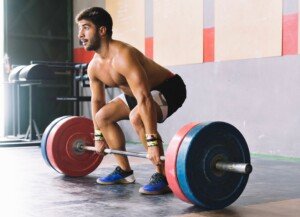
Freepik.com
Model Our Ancient Ancestors
Primitive man, when fighting or fleeing from danger, didn’t have the luxury of convenient rests. He had to keep pushing in the name of survival.
Modern man must exercise this same way, to defeat stress hormones that cause heart disease. This is why rest periods between intense exercises should not be too long.
“Triggered by fear, stress activates the fight-or-flight response and releases stress hormones that can potentially damage cardiac tissue,” says John M. Kennedy, MD, in his book, The 15 Minute Heart Cure: The Natural Way to Release Stress And Heal Your Heart In Just Minutes A Day.
He is medical director of preventative cardiology and wellness at Marina del Rey Hospital.
The fear that Dr. Kennedy references can be the fear that a hunter-gatherer person experiences upon being faced with a wild boar 50,000 years ago, or the fear of what your boss at work wants to see you about at the end of the day.
The human body does not distinguish between these different sources of fear.
The stress response is the same for both kinds of fear: Fear “activates the amygdala, the emotional center of the brain,” says Dr. Kennedy in his book.
This primitive part of the brain stimulates the memory part, called the hippocampus.
Next in the chain of events is the release of stress hormones to prepare the body for fighting — or fleeing — from the perceived threat. Among the responses is a racing heart to supply more oxygen to working muscles.
Dr. Kennedy explains in the book, “This same pattern and cascade of events occurs for less stressful events than meeting a bear, such as being late for work, financial pressures, or having a marital spat.”
The stress hormones in ancient man didn’t have much time to run amok in his body and cultivate heart disease because he either fought the danger or ran from it; either choice required intense physical exertion.
Modern Man Can’t Always Sprint Away from Stress
If you fight your boss at work, you’ll get fired and arrested for assault. If you run from him, you’ll get “written up.”
Other stressful scenarios have you trapped — inside your car during a traffic jam, making you late for an important appointment.
Since you’re not able to fight or run, the stress hormones remain circulating in high amounts, wreaking havoc throughout your body and accelerating heart disease.
Since you can’t pick up your boss and body-slam him at the onset of stress, then the next best thing is to hit the gym right after work.
- After your chin-ups, do fast stepping up and down on a stool while holding 10-20 pound dumbbells.
- After the renegade rows (combination of pushup and dumbbell row), do 30 seconds of jumping alternating lunges.
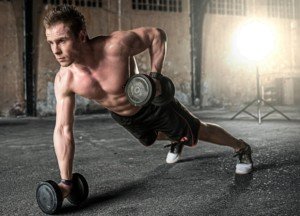
High intensity interval training is another way to sabotage the damaging effects that stress hormones have on the heart.
- Sprint as fast as you can down your street.
- Walk back to the starting point, and sprint again.
- Walk back.
- Do eight sprints total. You’ll feel as though you just fought off a bear or ran from one that was chasing you through the woods.
Short bouts of very intense exercise increase production of muscle-building and fat-burning hormones.
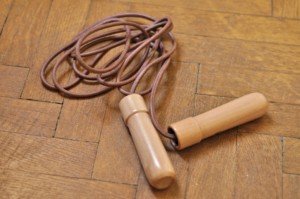
These hormones take out the stress hormones. Exercise that can be sustained for lengthy periods, such as a duration-based jog, does not produce these stress-fighting hormones.
Stress Promotes Heart Disease
Stress really does kill, and really does encourage heart disease. Modern-day living is crammed with stress, and traps you in your workplace cubicle, workplace meeting, dentist’s office, dinner table with tempers flaring, going through the month’s bills, etc.
Chronically elevated levels of stress hormones will ravage the body and disease the heart over time.
So go to the gym; the gym is your jungle to slay beasts or flee from them, to maintain good heart health.
Exercise like a warrior to avoid the detrimental effects of the body’s fight or flight response.
 Double board certified in cardiovascular disease and also internal medicine, Dr. Kennedy’s special interest is stress and how it adversely affects a person’s delicate cardiovascular system.
Double board certified in cardiovascular disease and also internal medicine, Dr. Kennedy’s special interest is stress and how it adversely affects a person’s delicate cardiovascular system.
 Lorra Garrick has been covering medical, fitness and cybersecurity topics for many years, having written thousands of articles for print magazines and websites, including as a ghostwriter. She’s also a former ACE-certified personal trainer.
Lorra Garrick has been covering medical, fitness and cybersecurity topics for many years, having written thousands of articles for print magazines and websites, including as a ghostwriter. She’s also a former ACE-certified personal trainer.
.
Top image: Shutterstock/airdone
3 Exercise Tips for Strength Gain & Fat Loss for All

Strength Training and Its Aerobic Effect
An intense set of lifting weights will raise heart rate.
Though the set may last 10-30 seconds, this is all that’s required to force the cardiovascular system to adapt to the stimulus.
The longer an intense strength training set, the more the cardiorespiratory system must work.
After a set of 20 reps with heavy weight in a compound lower body exercise, your heart will be thumping.
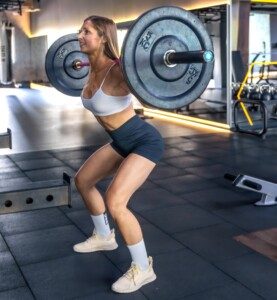
Freepik/pvproductions
Twenty reps of dumbbell curls or triceps kickbacks won’t do much for heart rate.
But 20 reps of a heavy full range squats, leg presses, or pull-ups will spike heart rate to supply these multiple large muscle groups with lots of oxygen.
Strength training indeed produces an aerobic training effect, even though this type of exercise is called “anaerobic.”
You must lift intensely with compound (multi-joint) exercises to get the cardio effect I just described.
When compound movements are performed this way, a fat loss effect is greater than when strength training is performed with low reps.
Strength training does not replace cardio exercises, so you should always have cardio workouts as a regular feature in your fat loss regimen.
Burst Training for Fat Loss
A single burst of high energy physical activity that lasts for around 60 seconds, done a total of eight times spread throughout the day, will actually do far more for fat loss than will an hour and a half nonstop on any type of cardio equipment, or jogging or bicycling outdoors.

Taco Fleur/CreativeCommons
This is because 60 seconds of highly intense movements provoke a fat-burning hormonal response, making these hormones continue to circulate throughout your body in elevated amounts, all day long, bringing up resting metabolic rate.
Squat Form
The squat is one of the premier exercises for gaining strength and achieving weight loss.
Before using a bar, first master your form with bodyweight squats in front of a mirror. When you feel that your form is good, use a light bar.
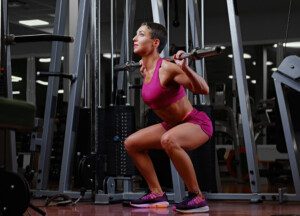
Freepik.com/fxquadro
People are so eager to be “squatting big” that they never learn good, efficient form.
Proper form is vital for avoiding back injury and for maximizing fat loss and strength gain results.
The back squat should be powered by the glutes and legs, not the lower back.
When you feel confident squatting with a light bar, enlist a certified personal trainer inspect your form.
Make sure that the trainer views your profile to get a good look at your lower back as you squat, to make sure that you do not lose the lumbar arch. Ask the trainer to watch your feet and knees for proper tracking.
By implementing these 3 exercise tips, you will expedite reaching your fat loss and strength gain goals.
 Lorra Garrick has been covering medical, fitness and cybersecurity topics for many years, having written thousands of articles for print magazines and websites, including as a ghostwriter. She’s also a former ACE-certified personal trainer.
Lorra Garrick has been covering medical, fitness and cybersecurity topics for many years, having written thousands of articles for print magazines and websites, including as a ghostwriter. She’s also a former ACE-certified personal trainer.
.
Top image: Freepik.com
Best Exercise to Lower Lung Cancer Risk in Ex-Smokers

Former smokers are still at risk for lung cancer, and there is one particular exercise that’s been found to significantly lower the ex-smoker’s risk of developing cancerous tumors in the lungs.
According to research presented at the American Association for Cancer Research’s Sixth Annual International Conference on Frontiers in Cancer Prevention Research in Philadelphia, exercise has been shown to have quite a benefit in lowering the risk of lung cancer.
However, this benefit of exercise against lowering lung cancer risk applies basically to former smokers.
Research that was presented at the International Conference shows that exercise can lower the risk of getting lung cancer by as much as 45 percent — in people who used to smoke.
The study involved 3,800 non-Latino white men and women using a “pairing system.” This tool segmented study subjects according to their smoking status.
Which exercise works best for ex-smokers in lowering lung cancer risk?
Interestingly, the type of exercise that was reviewed was that of gardening.
Michele Forman, one of the researchers, said that people with lung cancer, when reporting physical activities, name gardening among only a few activities that they report doing.

Lung cancer risk was cut by 45 percent for ex-smokers who gardened. For current smokers who participated in this activity, it was 33 percent.
However, diet adds to the equation because lung cancer risk in former smokers who gardened — and who ate four-plus salads a week — was reduced by 67 percent.
And with current smokers who ate four-plus salads every week as well as gardened, lung cancer risk was decreased by 71 percent.
Forman says that more research is needed because it’s not clear just how gardening is connected to lowering the risk of lung cancer, in that, is the reduced risk from the exercise component of gardening?
Or might it be from other variables connected to this activity, such as low consumption of alcohol?
On an intuitive level, it seems as though a combination of exercise from gardening, plus consumption of pesticide-free vegetation from the garden, would both contribute to lower risk of lung cancer in smokers and former smokers.
However, just what kind of gardens were being cultivated was not revealed; not all gardens (e.g., rose) produce edible vegetation.
Thus, this points to exercise from gardening as likely being a driving force to lowering lung cancer risk.
Does this mean you must absolutely start a garden to reap these benefits? Of course not. This isn’t practical for many people.
Instead, take up some form of exercise that’s comparable to typical gardening, and this will lower the risk of lung cancer in the former smoker (and current).
Physical activity that’s comparable would include moderate-effort walking and easy calisthenics, mild workouts on cardio machines, beginning or “low impact” aerobics (classes or videos), beginning Pilates or yoga, tai chi and easygoing resistance training.
The study did not report how strenuous the gardening activities were, so I’m assuming that exertion was mild, since some of the study subjects had lung cancer, and even more were smokers.
In summary, you now know which type of exercise was shown by a study to go a long way in lowering the risk of lung cancer in former smokers.
Here is the full study summary.

